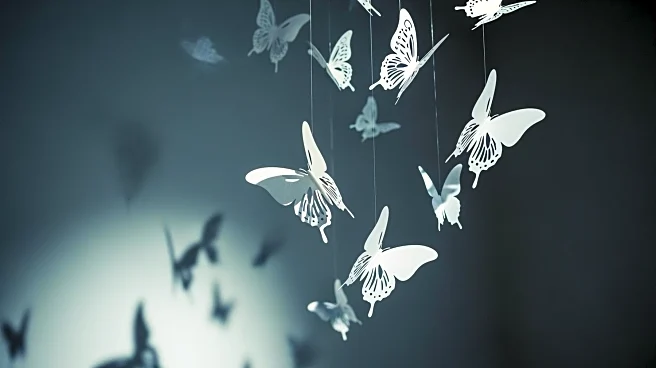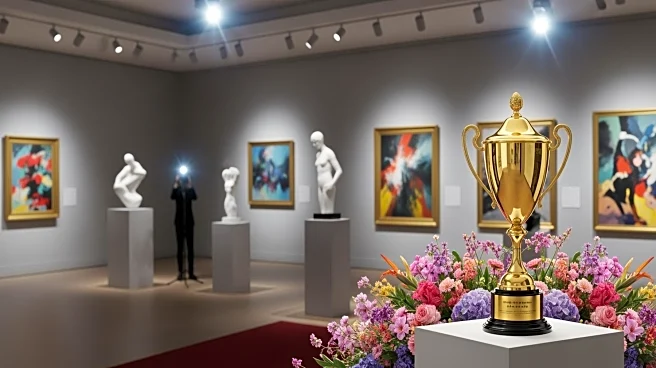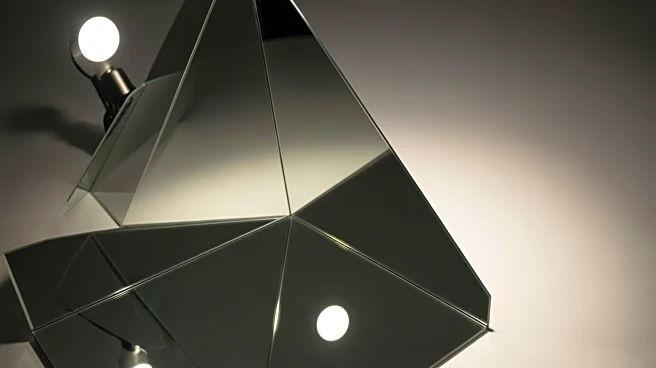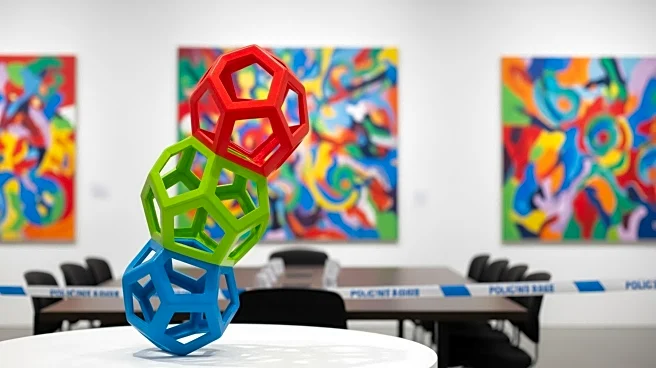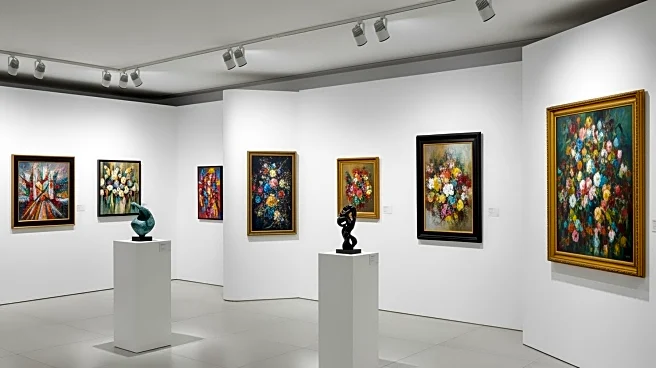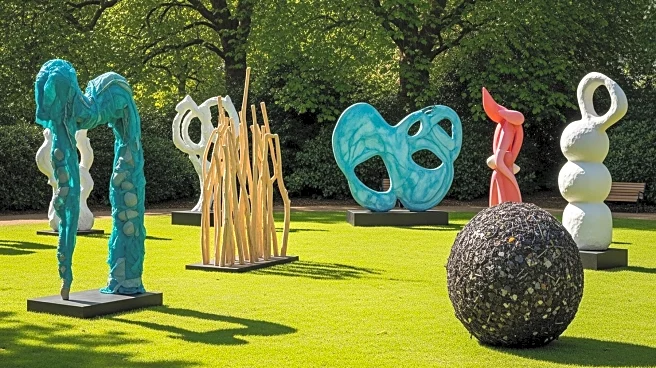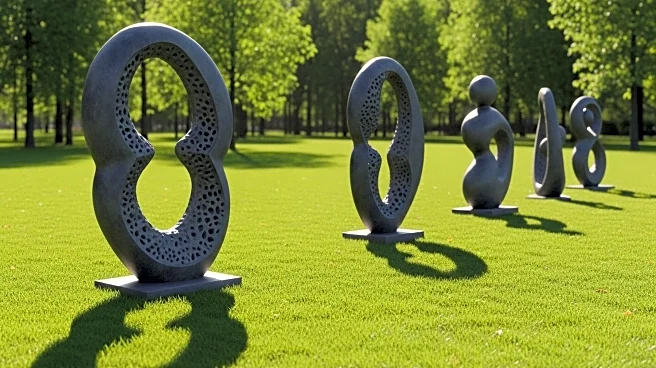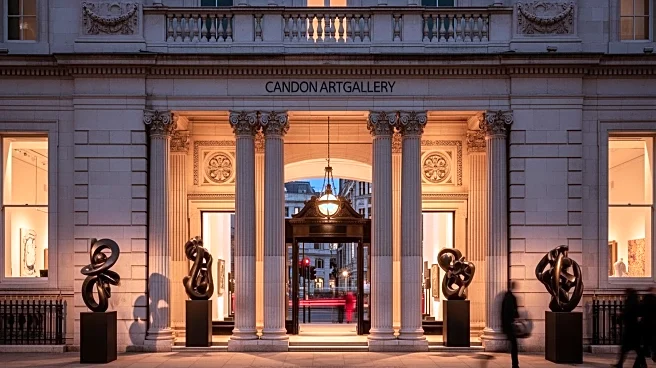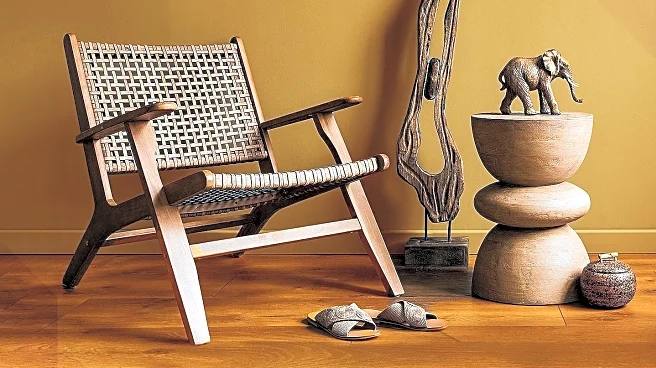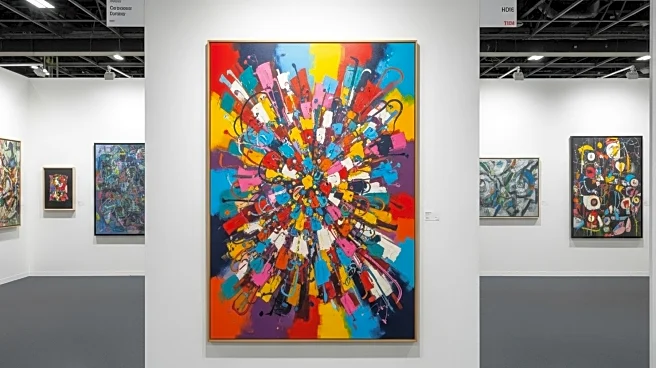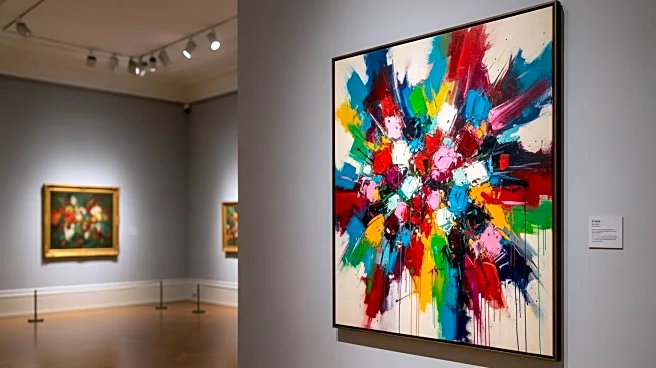What's Happening?
Tanoa Sasraku, a multimedia artist from Plymouth, has launched an exhibition titled 'Morale Patch' at the Institute of Contemporary Arts in London. The exhibition features Sasraku's innovative works that
utilize water and ultraviolet light to create art that changes and decays over time, mirroring human aging. The exhibition includes 'Watchlist,' a collection of branded trinkets from oil companies, and 'Subdued Morale Patch,' a series of experimental works on paper. Sasraku's work often explores themes of national identity and conflict, using raw materials like crude oil to connect with landscapes and art. The exhibition challenges traditional notions of art preservation, emphasizing the transient nature of materials and their relationship to human life.
Why It's Important?
Sasraku's approach to art challenges the conventional desire for permanence in artistic creations, offering a fresh perspective on how art can reflect the impermanence of human life. By using materials that naturally decay, Sasraku's work prompts discussions on the sustainability and environmental impact of art production. The exhibition also highlights the intersection of art and politics, as Sasraku uses military and corporate symbols to critique national identity and the chaotic nature of political and bureaucratic systems. This innovative approach may influence future art practices and encourage artists to consider the environmental and ethical implications of their materials.
What's Next?
The exhibition 'Morale Patch' will be open until January 2026, providing an opportunity for visitors to engage with Sasraku's thought-provoking works. As the art community continues to explore themes of sustainability and impermanence, Sasraku's techniques may inspire other artists to experiment with materials that challenge traditional art conservation methods. The exhibition may also spark conversations about the role of art in addressing political and environmental issues, potentially influencing public policy and cultural discourse.
Beyond the Headlines
Sasraku's work raises questions about the role of art in society and its ability to reflect and critique cultural and political systems. By using materials that decay, Sasraku challenges the notion of art as a permanent fixture, suggesting that art should evolve and change like the societies it represents. This perspective may lead to a reevaluation of how art is preserved and valued, encouraging a shift towards more sustainable and dynamic art practices.
